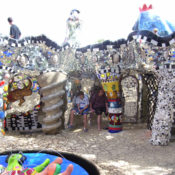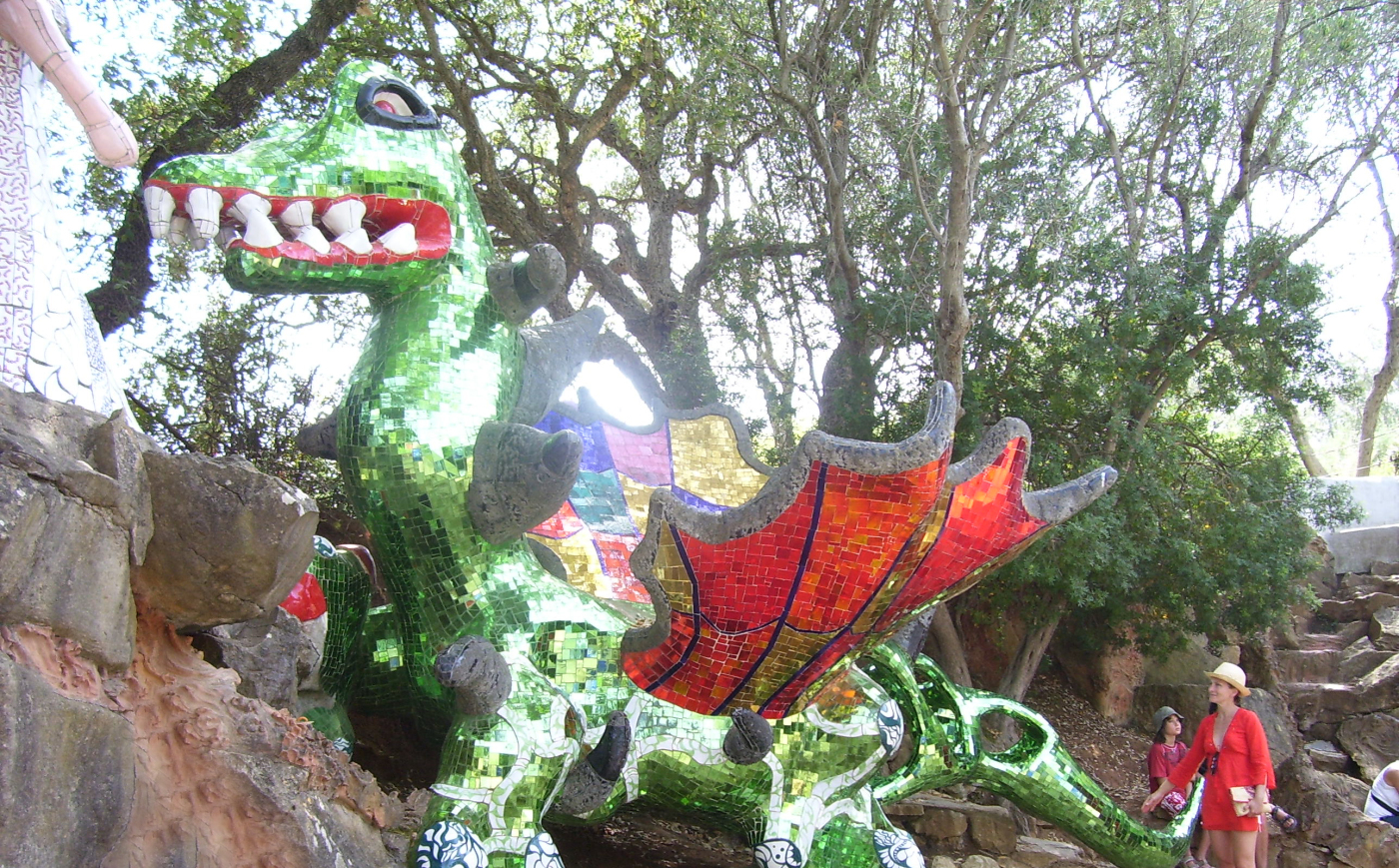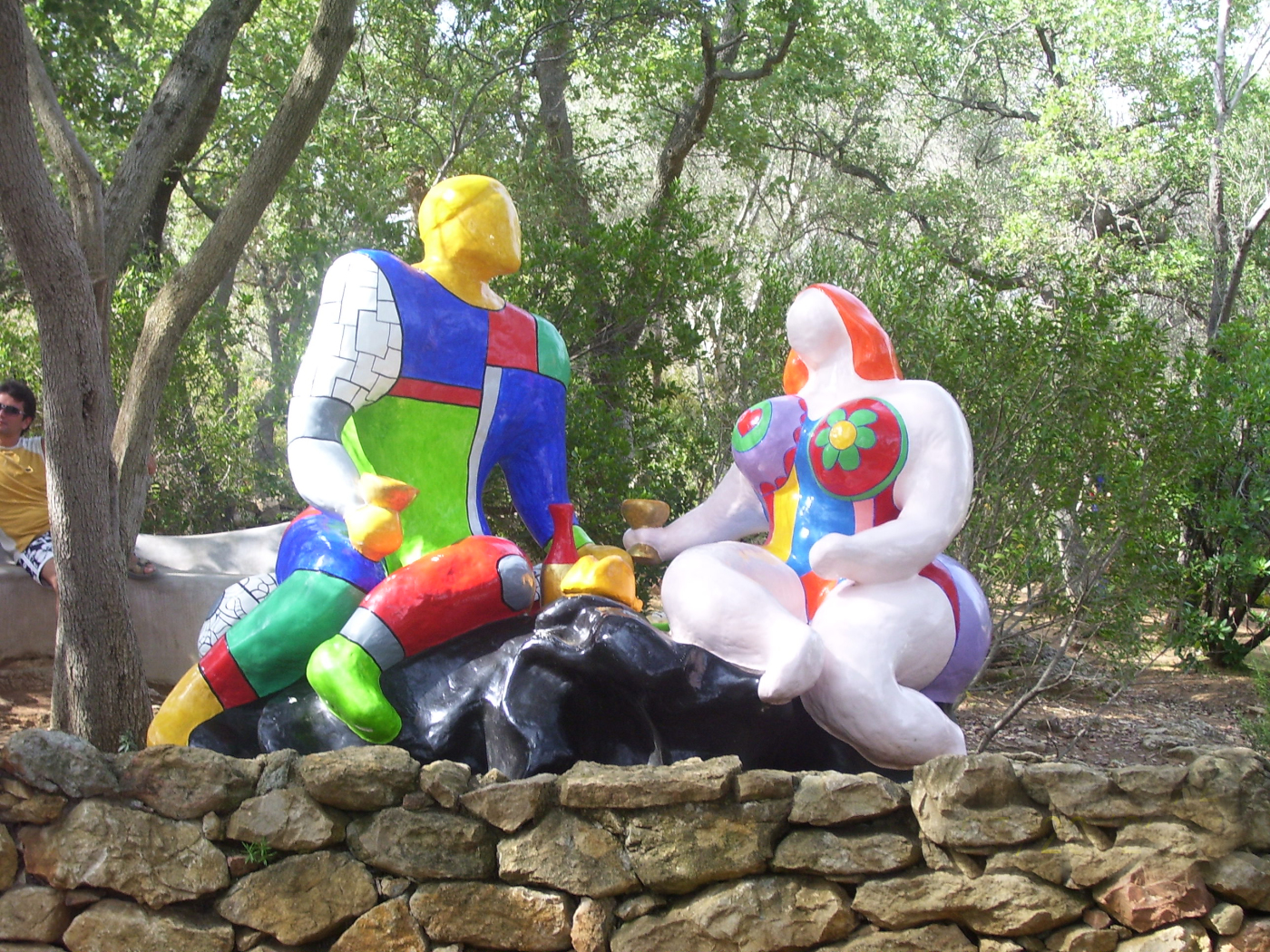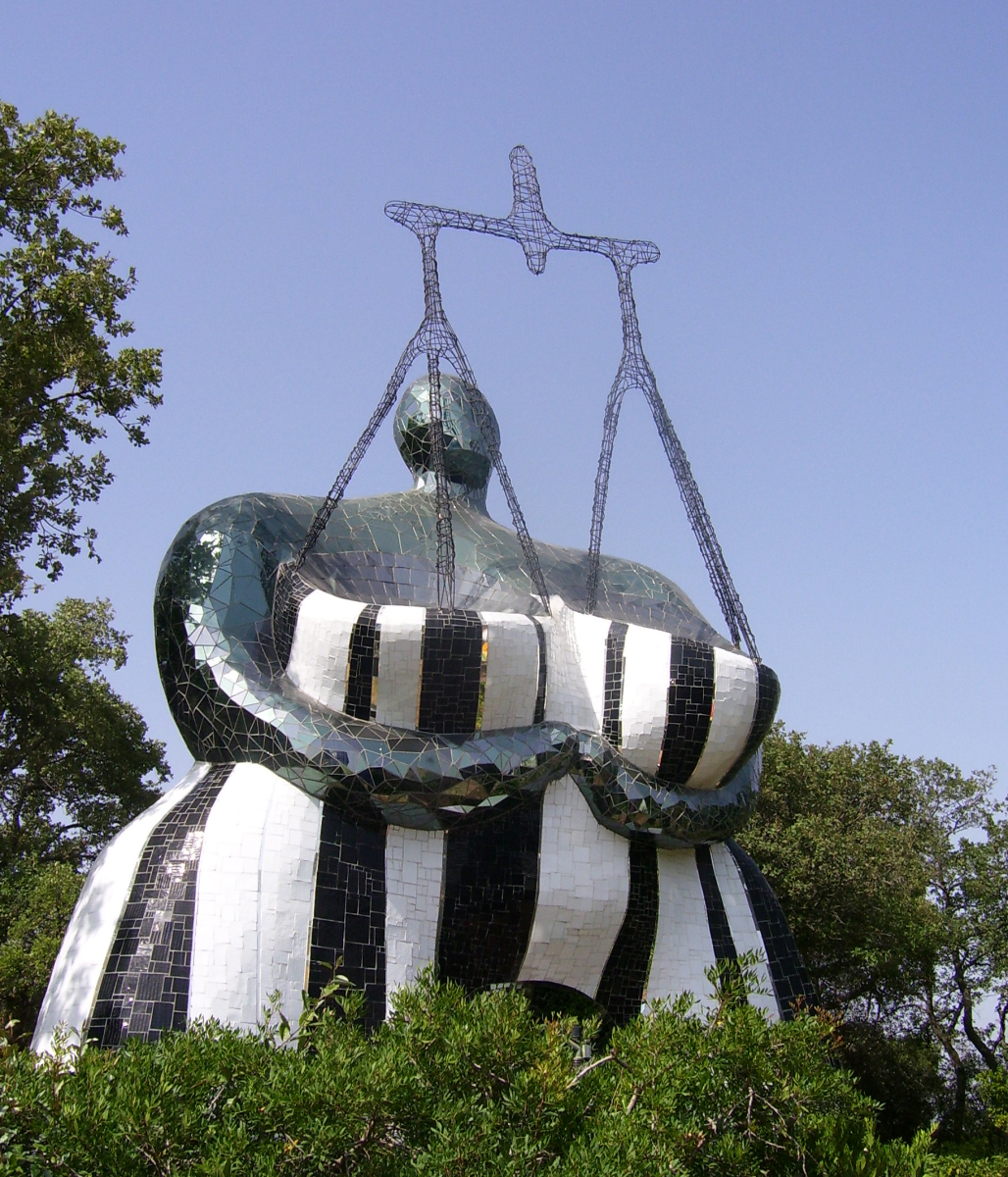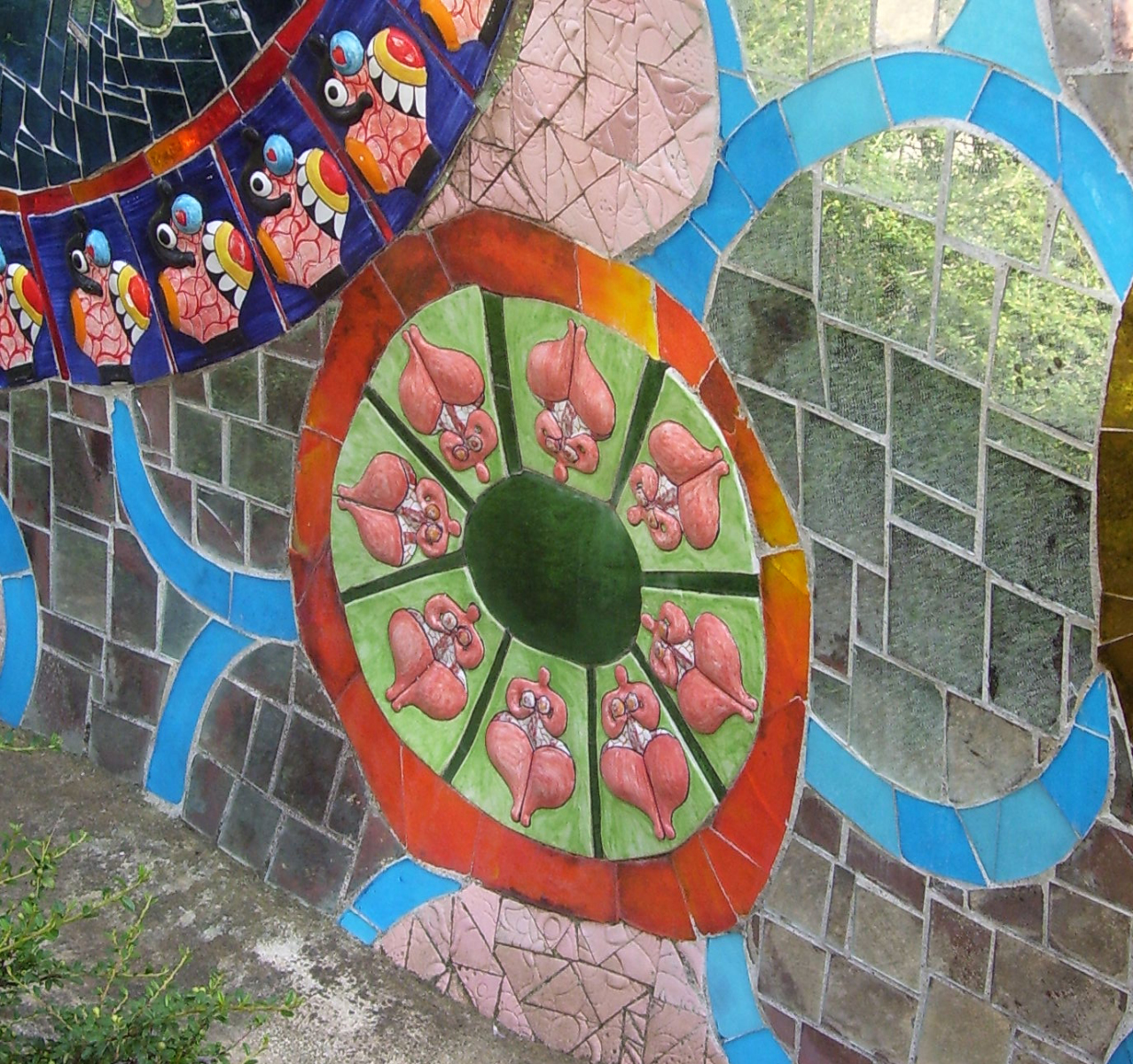Author: Shavawn Coleman
Giardino dei Tarocchi
When most people think of Italy, their first thoughts are of the Colosseum, the Vatican, or Venice’s Grand Canal. Not many imagine a colorful, imaginative, unique sculpture garden tucked away in Tuscany.
My first impression upon arriving was just WOW! This was not like the typical gardens I had been visiting all summer. I was engulfed with bright colors, intricate mosaic work, and enormous sculptures. The winding paths kept me intrigued as to what might be around the next corner. I was in Niki de Saint Phalle’s dream!
The Giardino dei Tarocchi (Tarot Card Garden) is about 2 hours north of Rome. Being based on Tarot Cards, this isn’t your typical Italian garden. The designer, Niki de Saint Phalle started the layout and design of the garden in 1978 and opened it to the public in 1998. De Saint Phalle was a French sculptor best known for her large, voluptuous, and colorful statues exhibited all over the world. She worked and lived on the site of the Tarot Card Garden until her until her death in 2002.
High Priestess and Magician
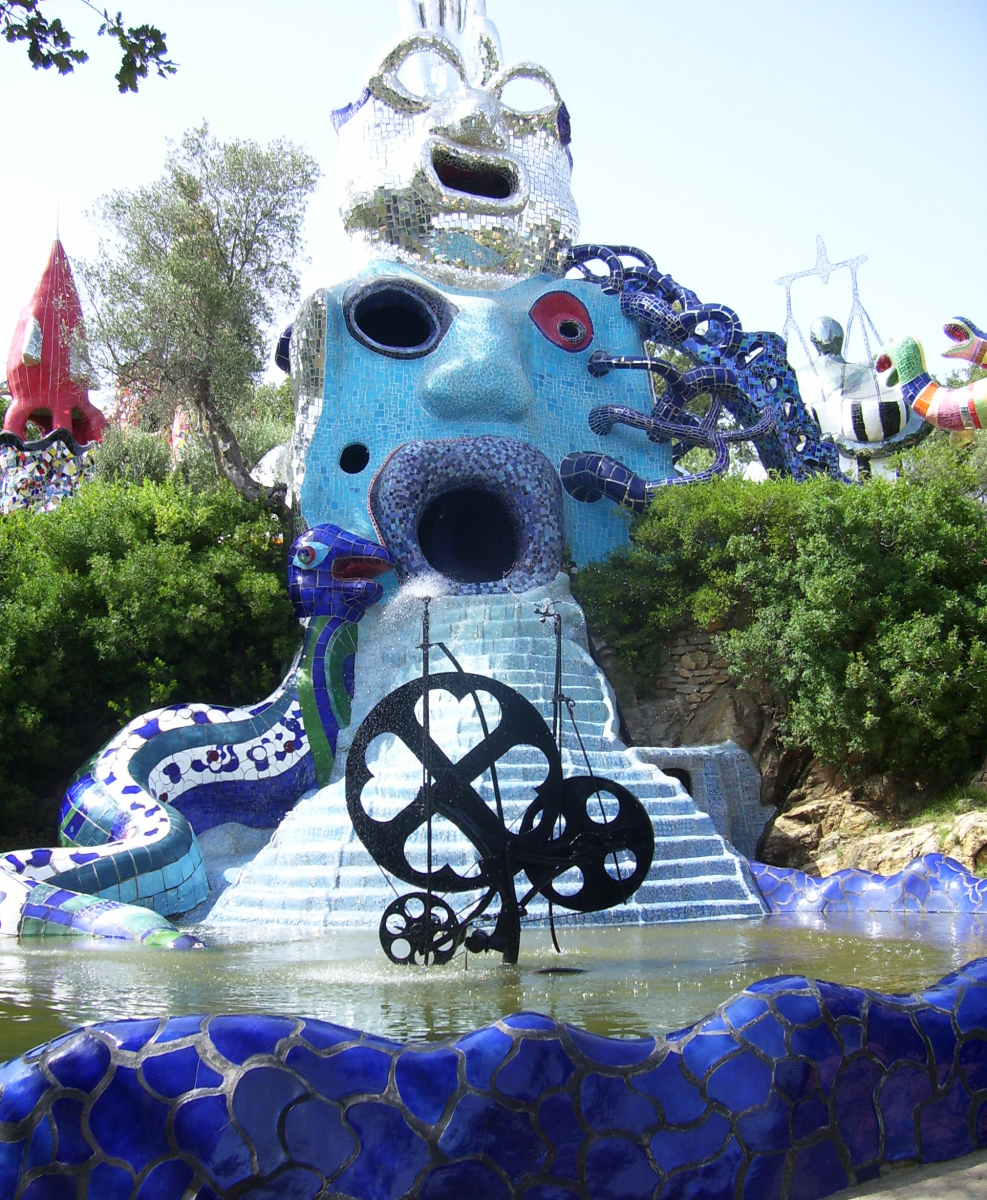 One of the first sculptures to capture your attention is based on the High Priestess Card. This work represents feminine intuition, which, according to the tarot, is one of the ‘keys’ to wisdom. On top of the High Priestess is the Magician. According to de Saint Phalle’s website, “The magician is the card of God the creator of the universe. It is he that created the marvelous joke of our paradoxical world. It is the card of active intelligence, pure light, pure energy, mischief and creation” (http://www.nikidesaintphalle.com/).
One of the first sculptures to capture your attention is based on the High Priestess Card. This work represents feminine intuition, which, according to the tarot, is one of the ‘keys’ to wisdom. On top of the High Priestess is the Magician. According to de Saint Phalle’s website, “The magician is the card of God the creator of the universe. It is he that created the marvelous joke of our paradoxical world. It is the card of active intelligence, pure light, pure energy, mischief and creation” (http://www.nikidesaintphalle.com/).
Strength
The Strength Card is represented by a young maiden and a dragon. Here, the maiden must tame the monster that is inside herself, her inner demons.
Choice
A favorite of many women is the Lovers Card. Here, de Saint Phalle chose to call it The Choice Card. She believed there is a wrong and right choice. Who better to represent that than the first couple to make a choice, Adam and Eve.
Justice
One of the most eye-catching sculptures is the Justice Card. This represents the idea that you must look at yourself and realize that you have a dark side. Upon this realization you will have the capability to judge with compassion. De Saint Phalle writes, “Real justice is not blind, it brings a vision of universality” (http://www.nikidesaintphalle.com/).
These are just a few of the 21 cards she created. De Saint Phalle’s style is clearly influenced by the architect Antonio Gaudi. She first witnessed his work in 1955. She visited Gaudi’s Park Guell in Barcelona and fell in love with the curves, bright colors, and unusual shapes and sculptures. Notable in de Saint Phalle’s work is the use of full figured women in the sculptures. Even in the small details, like this fleur-de-lis, a voluptuous woman’s figure appears.
She first started the full figured women sculptures, which she calls Nanas, in the 1960’s. They are brightly painted, voluptuous, and connected with the women’s movement of the time. With the creation of the Nanas came her motto, ‘Power to the Nanas!’ They soon became the icon of female strength and empowerment (http://www.fembio.org).
Each sculpture at the Tarot Card Garden was made by hand–nothing was manufactured. Every one of the tiles in each and every mosaic was chiseled and attached by hand.
There is no way to put into words the dreamlike shapes or the energy in this garden. This garden is a place for everyone to enjoy, whether you want to try to find a deeper meaning to life through these enormous, expressive Tarot Cards or simply to enjoy the whimsical sculptures.
-All Photos By: Shavawn Coleman. All rights reserved.
The Story of Laos: Buried Explosives
While reading through the March 2013 issue of Landscape Architecture Magazine and came across an article about Xiaoxuan Lu, student at the Harvard Graduate School of Design trying to make a true difference with her profession.
The Challenge:
During the Vietnam War, a large number of bombs dropped over Laos never exploded and are still buried underground and very much explosive if disturbed. Since the war, only 1% of the land has been cleared as safe. Laos also has another secret, gold deposits. Lu traveled to Laos looking for a thesis topic and came across this proposal: Gold mining companies work with local farmers to rid the land of the buried bombs. This proposal received much praise, along with the 2012 ASLA Student Award of Excellence.
 This map shows the bombs on the Ho Chi Minh trail during the Vietnam War overlapped with one of the gold mining districts. (Photo by: Xiaoxuan Lu)
This map shows the bombs on the Ho Chi Minh trail during the Vietnam War overlapped with one of the gold mining districts. (Photo by: Xiaoxuan Lu)
In her research she visited MAG (Mines Advisory Group) where she learned how to clear land for use and that farmers were still growing rice on land with live bombs because they had no other choice. It would take thousands of years to clear all the land littered with bombs.
“…All Problems are Solved by Good Design” -Stephen Gardiner
Her Solution:
The farmers would clear a small area of land using slash and burn techniques and use that land for one year. (Current regulation states only the top 25 cm needs to be cleared for farming purposes) Then the team to demine the area (funded by the gold companies) would come in and start clearing. If gold was found, they would mine it out on a small scale, as opposed to the large scale as they do now. Once the gold has been mined, you now have a small plot of land that has been cleared of mines. This small area of land could be filled with water for aquaculture or used as terraced farming.
 After the land has been mined, water will fill the mined areas for aquaculture. (Photo by: Xiaoxuan Lu)
After the land has been mined, water will fill the mined areas for aquaculture. (Photo by: Xiaoxuan Lu)
As of right now, no measures have been taken to put this plan into action. She has received a lot of interest from humanitarian groups and would love to see Laos put her thesis into action!
So Much More to Landscape Architecture!
Who knew that landscape architecture would be so instrumental in solving such a huge problem! When it comes to our profession not only do we have the ability to make sites aesthetically beautiful but we have the potential to make a true difference in the world. Lu has truly made an impact in Laos with this idea. Not only is it safety issue for the residences but it also can boost the economy with the gold mining and farming. It makes you a little inspired to make a difference in your community!
What have you done?
With this year being ASLA’s Year of Public Awareness, Lu definitely has made us aware of the issues in Laos with a great solution. On a smaller scale what are some ideas that could bring public awareness in to your community? Is it a small community garden in an inner city school? Designing a memorial garden for a loved one? Bringing green space to a downtown area in need of redevelopment? Any small step can really make a difference to someone in your community and you may never know it.
To see Xiaoxuan Lu’s project go to: http://www.asla.org/2012studentawards/124.html



